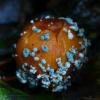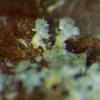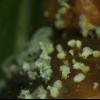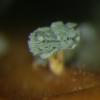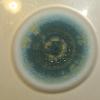
31-07-2025 16:32
 Andreas Gminder
Andreas Gminder
Dear collegues,today I found on a very fresh fire

09-08-2025 13:13
 Maria Plekkenpol
Maria Plekkenpol
Hello,Yesterday I found these on burnt soil. Apoth

09-08-2025 17:52
Henri KoskinenHello, would you say this is Peziza or Pachyella?

06-08-2025 08:56
 Antonio Ezquerro Antoñana
Antonio Ezquerro Antoñana
Hola a todos, Me gustaría saber qué opinan sobre

12-02-2012 11:31
 Hans-Otto Baral
Hans-Otto Baral
Hi allI am quite sure that nobody has a pdf of thi

02-08-2025 12:35
 éric ROMERO
éric ROMERO
Bonjour tous, J'ai trouvé sur pétiole de Fraxin

02-08-2025 17:21
 Andgelo Mombert
Andgelo Mombert
Bonjour,Je recherche la description et la planche

30-07-2025 20:52
Bohan JiaHi together, I've been looking posts in AscoFra

30-07-2025 10:12
 Bernard CLESSE
Bernard CLESSE
Bonjour à toutes et tous,Pourriez-vous m'aider à

30-07-2025 18:06
Stefan JakobssonOn a decorticated twig of Alnus incana on moist so
Synnemata of Penicillium/Talaromyces on Hawthorn (Crataegus) fruit
Stephen Martin,
08-12-2022 09:10
 Is there a specific Penicllium species like this growing on the rind of decaying fruit (not advanced state of decaying yet) of Crataegus monogyna?
Is there a specific Penicllium species like this growing on the rind of decaying fruit (not advanced state of decaying yet) of Crataegus monogyna?I have not done any microscopical investigations, but perhaps some conclusion can be already drawn from the shape, feeding type and host specificity discussed here. I can do some basic microscopy later on.
I think I managed to have a pure culture (still 1cm wide after 3 days).
Stephen Martin,
11-12-2022 08:45

Re : Synnemata of Penicillium/Talaromyces on Hawthorn (Crataegus) fruit
Well, this should be a Talaromyces sp. - but I cant find much knowledge about synnemata species on fruit. Wondering if someone found something similar to compare.... Good Sunday!
Przemyslaw Drzewiecki,
11-12-2022 14:38
Re : Synnemata of Penicillium/Talaromyces on Hawthorn (Crataegus) fruit
Stephen Martin,
11-12-2022 21:53

Re : Synnemata of Penicillium/Talaromyces on Hawthorn (Crataegus) fruit
Thank you for this Przemek - seems we have same interest / 'hobby' !!
I am happy to see some of my Penicillium records and colonies match those listed in the document you kindly shared (Is that your work?).
However I think the one I found on Hawthorn is different from those in the doc because it formed distinct tufts (synnemata) while those in the document are species with simple conidiophores. Also, my colonies have yellow-ochre areas - the same colour as the base/column of the synnematous growth.
For now I am happy that I have a pure colony and I will do more research in the coming days.
I am happy to see some of my Penicillium records and colonies match those listed in the document you kindly shared (Is that your work?).
However I think the one I found on Hawthorn is different from those in the doc because it formed distinct tufts (synnemata) while those in the document are species with simple conidiophores. Also, my colonies have yellow-ochre areas - the same colour as the base/column of the synnematous growth.
For now I am happy that I have a pure colony and I will do more research in the coming days.
Przemyslaw Drzewiecki,
11-12-2022 22:31
Re : Synnemata of Penicillium/Talaromyces on Hawthorn (Crataegus) fruit
Yes, mycology is a great hobby. :-) Sorry, I didn't notice that I provided a link without authors.
Here is the public source:
https://www.natur.cuni.cz/biologie/botanika/veda-a-vyzkum/atlas-mikroskopickych-saprotrofnich-hub-ascomycota
Are you sure these fruits didn't pass through the fox's digestive system? It is somewhat similar to Penicillium vulpinum.
Regards, Przemek
Here is the public source:
https://www.natur.cuni.cz/biologie/botanika/veda-a-vyzkum/atlas-mikroskopickych-saprotrofnich-hub-ascomycota
Are you sure these fruits didn't pass through the fox's digestive system? It is somewhat similar to Penicillium vulpinum.
Regards, Przemek
Stephen Martin,
12-12-2022 00:57

Re : Synnemata of Penicillium/Talaromyces on Hawthorn (Crataegus) fruit
I'm impressed with that website Przemek, the amount of info is incredible a mix of educative and taxonomic. Even if written in czech, i know I am going to use it.
Your question is very easy to answer. The fungus was found on the skin (epicarp) of the fruit of Crataegus monogyna (Hawthorn) fallen from the tree and lying on moist ground in a valley, still reddish and intact. In our country (Malta) there are no foxes or other mammals that consume this fruit. There were hundreds of fruits and about 10% where infected with this Penicillium.
Your suggestion is valid, it looks likes P. vulpinum (P. claviforme) but it is not copriphilous.
Thanks for messaging!
Your question is very easy to answer. The fungus was found on the skin (epicarp) of the fruit of Crataegus monogyna (Hawthorn) fallen from the tree and lying on moist ground in a valley, still reddish and intact. In our country (Malta) there are no foxes or other mammals that consume this fruit. There were hundreds of fruits and about 10% where infected with this Penicillium.
Your suggestion is valid, it looks likes P. vulpinum (P. claviforme) but it is not copriphilous.
Thanks for messaging!
